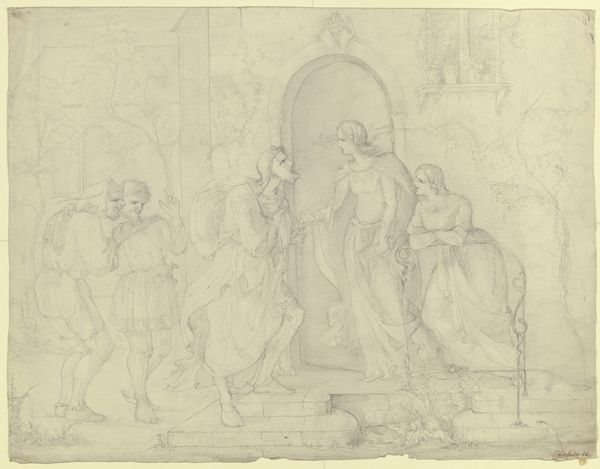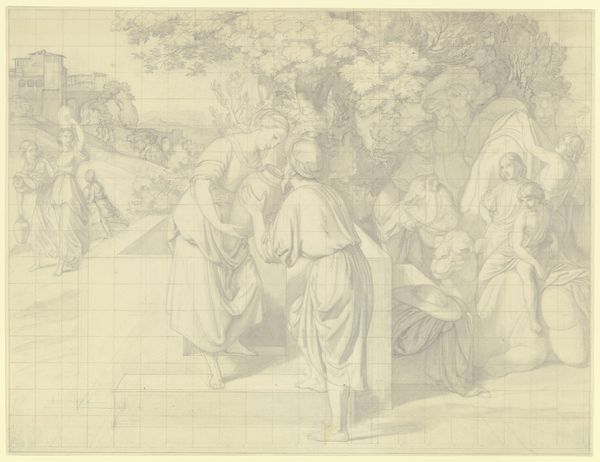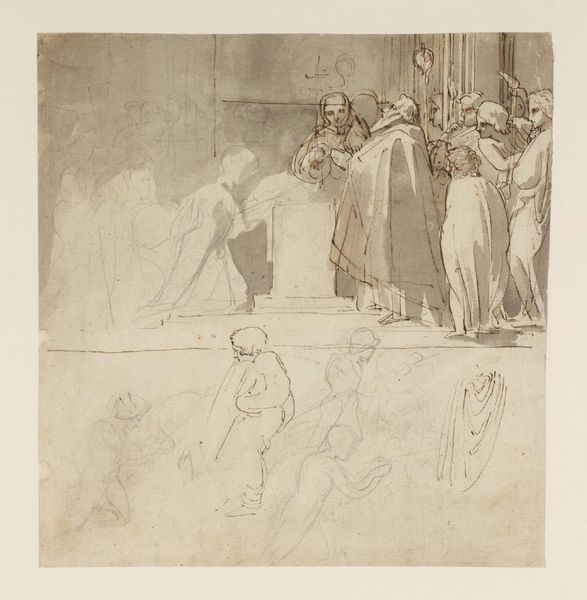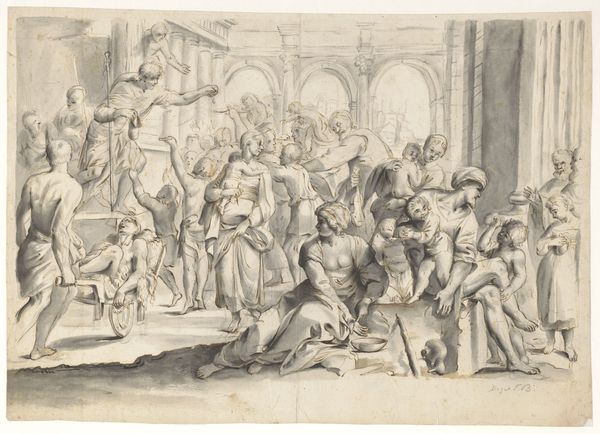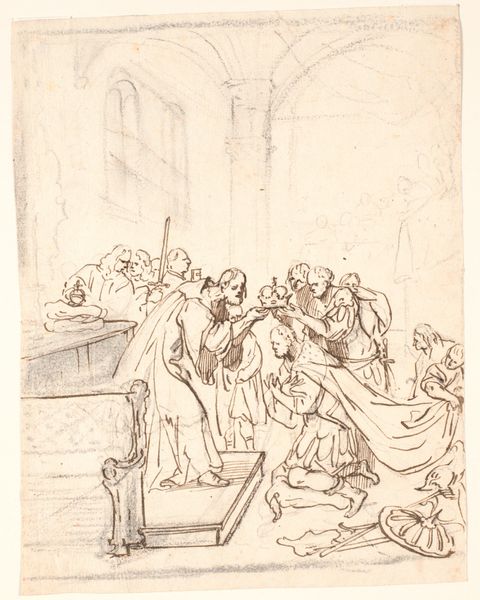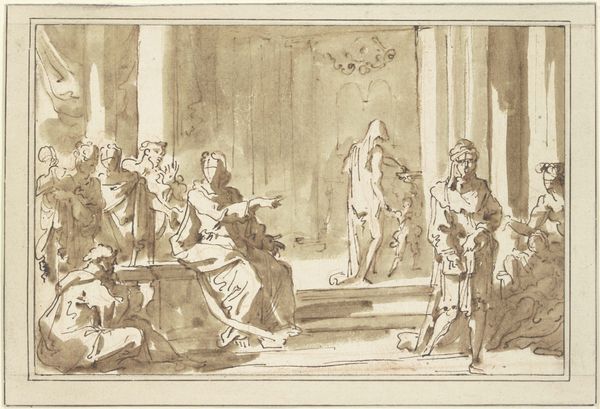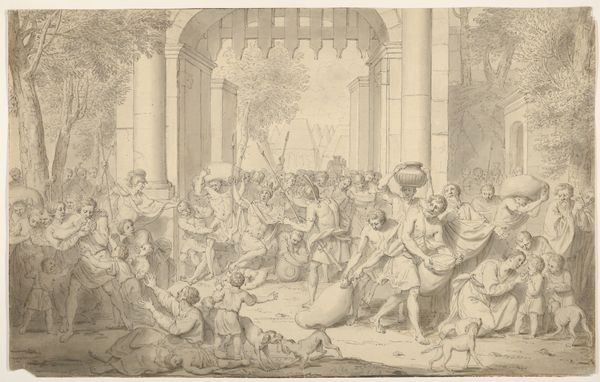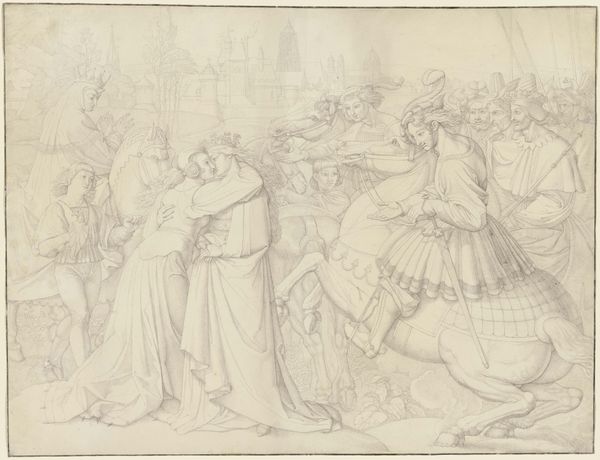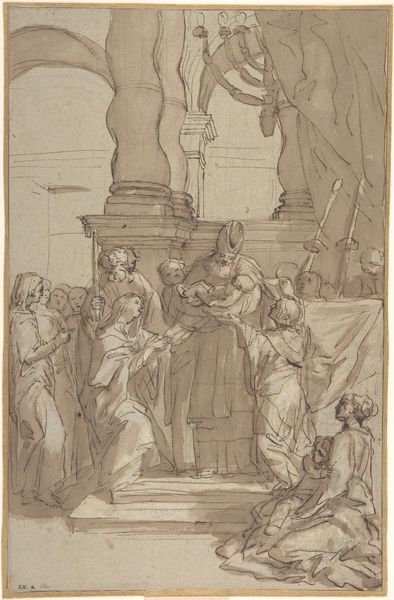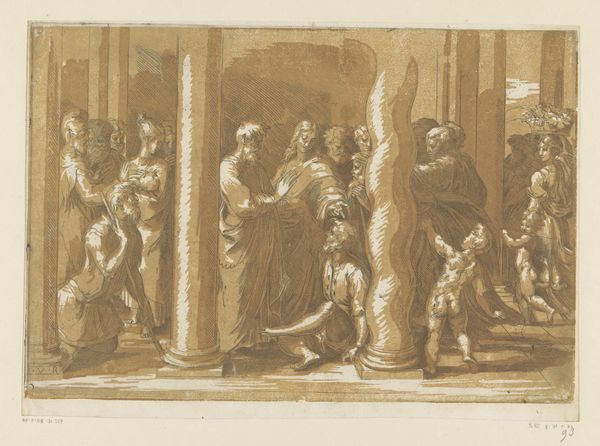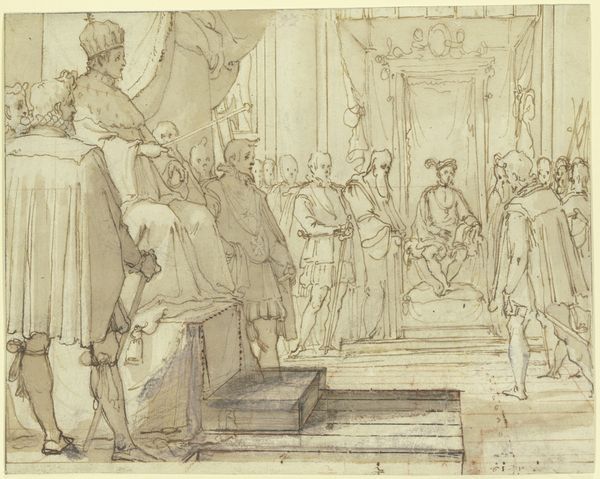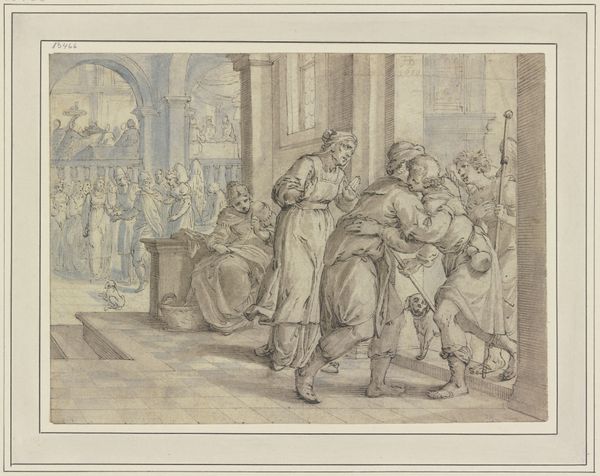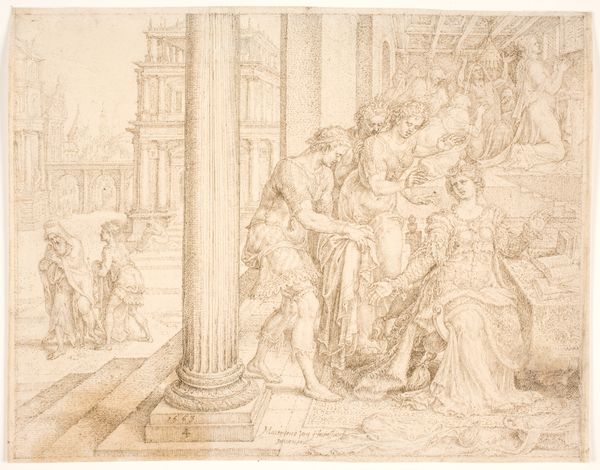
drawing, ink
#
drawing
#
16_19th-century
#
narrative-art
#
ink
#
history-painting
#
academic-art
Copyright: Public Domain
Curator: Peter Cornelius' "Scene in the Cathedral," rendered in ink on paper in 1811, depicts a congregation in quiet contemplation. Editor: The drawing is washed in pale hues, lending it a spectral, almost dreamlike quality. The figures appear caught in a moment of suspended animation. Curator: Cornelius was a key figure in the Nazarene movement. They sought to revive the spiritual depth of early Renaissance art within a religious context, often responding to the secular shifts happening within art institutions of the time. This work reflects their commitment to infusing art with morality and historical integrity. Editor: Looking at the composition, there is a very intentional organization of space and the characters occupying it. Notice the strategic use of architectural pillars to separate two groups on the right and the left, while also allowing their integration through the use of gothic arches and spatial harmony. The scene has both balance and visual interest, encouraging a very formal, close viewing experience. Curator: Indeed. These artists deliberately aimed for an art that served a public and pedagogical function, moving away from Baroque dynamism towards clarity. Cornelius sought to emulate the precision and clarity of early masters like Raphael and Dürer. Consider the impact that their artwork would have on social engagement as opposed to artworks whose subjects might not elicit the same communal feelings. Editor: One can certainly detect the meticulous detail—every figure is carefully delineated— yet there is a flatness. This deliberate flattening pushes the scene away from naturalism toward an emphasis on idealized form and symbolic clarity, and ultimately toward Cornelius' engagement with beauty as he understood it. Curator: The rediscovery of medieval art played a crucial role in shaping their artistic vision and ideology, responding against the grand narratives produced by art academies and seeking to create an alternative cultural space for spiritually guided art. Editor: For me, the composition holds an enduring beauty that encourages careful reflection on the details while being immersed in an idealized space. Curator: This drawing serves as a window into the artistic and socio-political aspirations of the Nazarene movement, revealing their engagement with history and morality.
Comments
No comments
Be the first to comment and join the conversation on the ultimate creative platform.
